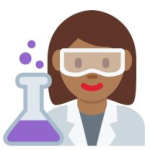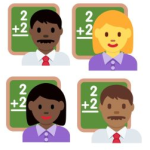7.8 Types of Sources
Once you have your research question, you’ll need information sources. In today’s complex information landscape, just about anything that contains information can be considered a source.
Examples
- books and encyclopedias
- websites, web pages, and blogs
- magazine, journal, and newspaper articles
- research reports and conference papers
- interviews and surveys
- photographs, paintings, cartoons, and other art works
- TV and radio programs, podcasts, movies, and videos
- illuminated manuscripts and artifacts
- bones, minerals, and fossils
- pamphlets and government documents
With so many available sources, the question is not whether sources exist for your project but which ones will best meet your information needs. Being able to categorize a source helps you understand the kind of information it contains, which is a big clue to (1) whether it might meet one or more of your information needs and (2) where to look for it and similar sources.
A source can be categorized by asking the following questions:
- Why was the source created?
- How will you use the source?
- Who was the original audience of the source?
- What format is the source in?
As you may already be able to tell, sources can be in more than one category at the same time because the categories are not mutually exclusive.
The Purpose of the Source
When you encounter a source, you should ask yourself, “Why does this source exist?” Thinking about the reason an author produced a source can be helpful to you because that reason was what dictated the kind of information they chose to include. Depending on that purpose, the author may have chosen to include factual, analytical information. Or, instead, it may have suited their purpose to include information that was meant to be entertaining. The author’s reason for producing the source also determined whether they included more than one perspective or just their own.
Authors typically want to:
- Inform and educate
- Persuade
- Sell services or products or
- Entertain
An author’s purpose can influence the kind of information they choose to include. Sometimes authors have a combination of purposes, as when a marketer decides he can sell more smart phones with an informative sales video that also entertains us. The same is true when a singer writes and performs a song that entertains us but that she intends to make available for sale.
Why Intent Matters
Authors’ intent matters because their goal will impact what information they include and how they present that information. For instance, when you’re looking for sources that will help you actually decide your answer to your research question or evidence for your answer that you will share with your audience, you will want the author’s main purpose to have been to inform or educate their audience. That’s because, with that intent, they are likely to have used:
- Facts where possible
- Multiple perspectives instead of just their own
- Little subjective information
- Seemingly unbiased, objective language that cites where they got the information
The reason you want that kind of resource when trying to answer your research question or explaining that answer is that all of those characteristics will lend credibility to the argument you are making with your project. Both you and your audience will simply find it easier to believe—will have more confidence in the argument being made—when you include those types of sources.
Sources whose authors intend only to persuade others won’t meet your information need for an answer to your research question or evidence with which to convince your audience. That’s because they don’t always confine themselves to facts. Instead, they tell us their opinions without backing them up with evidence.
It’s especially important to ask the purpose of online sources. Let’s say that you find a social media infographic about the health benefits of elderberry syrup. Someone took the time to create the post. Why did they do that work? Are they trying to sell you elderberry syrup or are they from a government health organization trying to combat misinformation about health supplements? The difference will tell you whether you can trust the source.
How Will You Use the Source?
Another way to categorize information is by the role it will play in your argument. Are you planning on doing analysis on the source or have you chosen the source because someone else has already done some analysis? We call this difference primary vs. secondary sources.
Primary Source
Information in its original form. When you work with primary sources, you provide the interpretation. Some examples are:
- Survey or research data
- A novel
- Breaking news
- An advertisement
- An eyewitness account
- A painting
- An interview
- A movie
Secondary Source
Repackaged, restated, or interpretation of primary information. Use secondary sources when you’re interested in the analysis of others. Such as:
- A book about marketing.
- An article that critiques a new piece of software.
- An article or web site that summarizes and synthesizes several eyewitness accounts for a new understanding of an event.
- A scholarly journal.
- An informational podcast
- A blog post
Tertiary Source
An index or something that condenses or summarizes information. Such as:
- Almanacs
- Guide books
- Survey articles
- Timelines
- User guides
- Encyclopedias
The difference between primary, secondary and tertiary can be a little confusing. Think of a primary source as raw materials that you will use to build an argument. You’re the one doing the analysis. For example, let’s say that your company wants to know how to increase the open rates of its email marketing campaign. The data of all of the email open rates from the past year are a primary source. You’ll use this data to look for trends about which emails are most and least popular. If you read a blog post by an expert in email marketing, however, you’re doing secondary research. You’ve chosen the blog posts because you want someone else’s expert opinion. A tertiary source is a source that you use to find other sources. For example, you might look at the Wikipedia entry for ’email marketing’ to find some other reliable sources.
Test Your Knowledge
Understanding the difference between primary and secondary sources is crucial to developing a source plan. Let’s say that you run a small company. Lately, your employees have been unmotivated. You don’t have a human resources department, so you want to do some research about the source of the employees’ lack of motivation. Sort the sources by primary or secondary.
Who Was the Intended Audience?
We can also categorize information by the expertise of its intended audience. Considering the intended audience–how expert one has to be to understand the information—can indicate whether the source has sufficient credibility and thoroughness to meet your needs. When you’re writing papers in university, academic articles are usually the best source. In the workplace, however, you may be researching something that doesn’t have many peer-reviewed articles about it yet or you may only need a basic understanding of the topic.
There are varying degrees of expertise:
Popular
Popular newspaper and magazine articles (such as The National Post, Maclean’s Magazine, and Rolling Stone) are meant for a large general audience, generally affordable, easy to purchase or available for free. They are written by staff writers or reporters for the general public.
Professional
Professional magazine articles (such as Plastic Surgical Nursing and Music Teacher) are meant for people in a particular profession, often accessible through a professional organization. Staff writers or other professionals in the targeted field write these articles at a level and with the language to be understood by everyone in the profession.
Additionally, they are:
- About trends and news from the targeted field, book reviews, and case studies.
- Often less than ten pages, some of which may contain footnotes and references.
- Usually published by professional associations and commercial publishers
- Published after approval from an editor.
Scholarly
Scholarly journal articles (such as Plant Science and Education and Child Psychology) are meant for scholars, students, or the general public who want a deep understanding of a problem or issue. Researchers and scholars write these articles to present new knowledge and further understand their field of study.
Additionally, they are:
- Where findings of research projects, data and analytics, and case studies usually appear first.
- It is often long (usually over 10 pages) and includes footnotes and references.
- Universities, professional associations, and commercial publishers usually publish them.
- They were published after approval by peer review or from the journal’s editor.
The most respected scholarly journals are peer-reviewed, which means that other experts in their field check out each article before it can be published. It’s their responsibility to help guarantee that new material is presented in the context of what is already known, that the methods the researcher used are the right ones, and that the articles contribute to the field.
Peer-reviewed articles are more likely to be credible. Peer-reviewed journal articles are the official scholarly record, which means that if it’s an important development in research, it will probably turn up in a journal article eventually.
Attribution
“Types of Sources” from Business Writing For Everyone by Arley Cruthers is licensed under a Creative Commons Attribution-NonCommercial 4.0 International License, except where otherwise noted.



